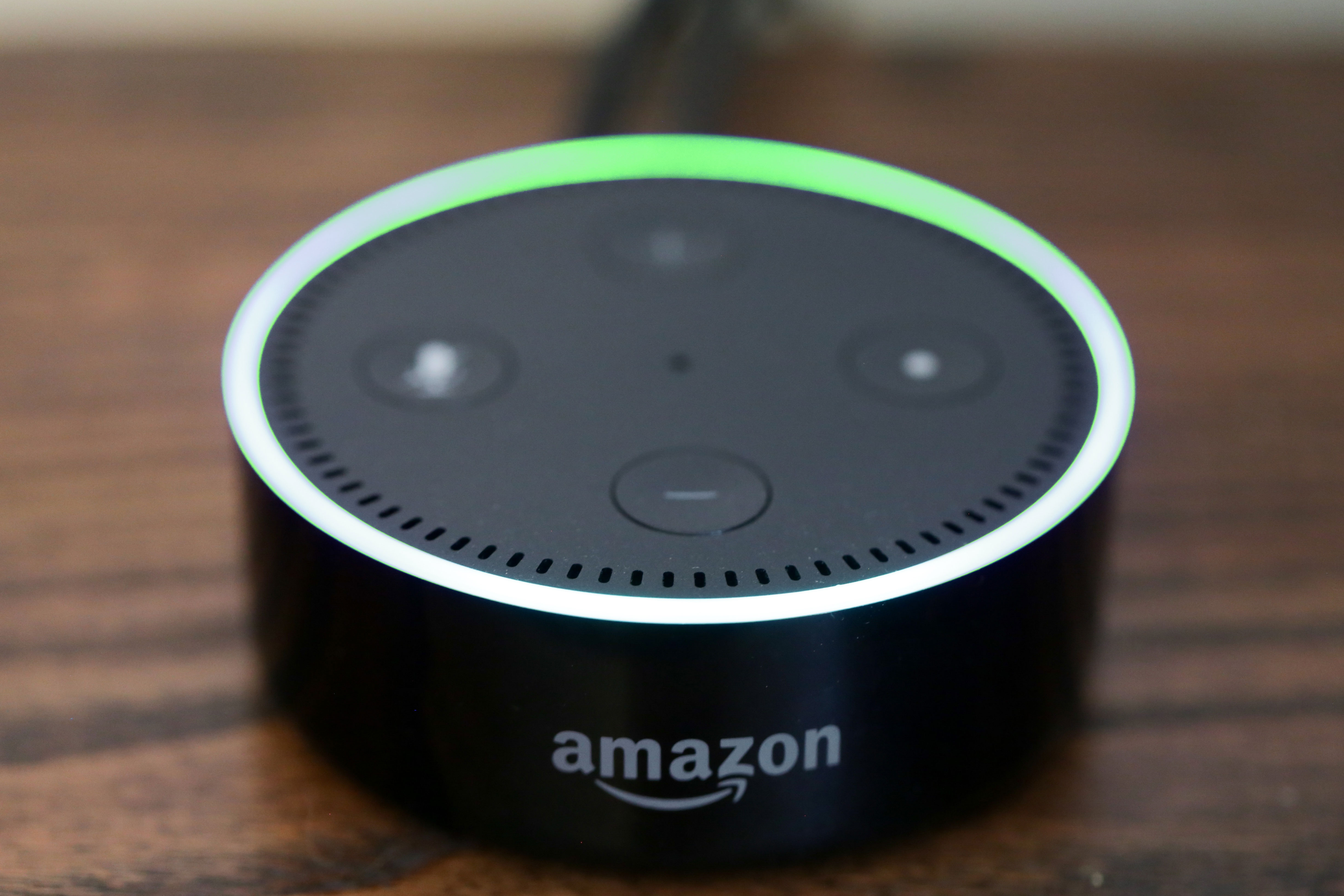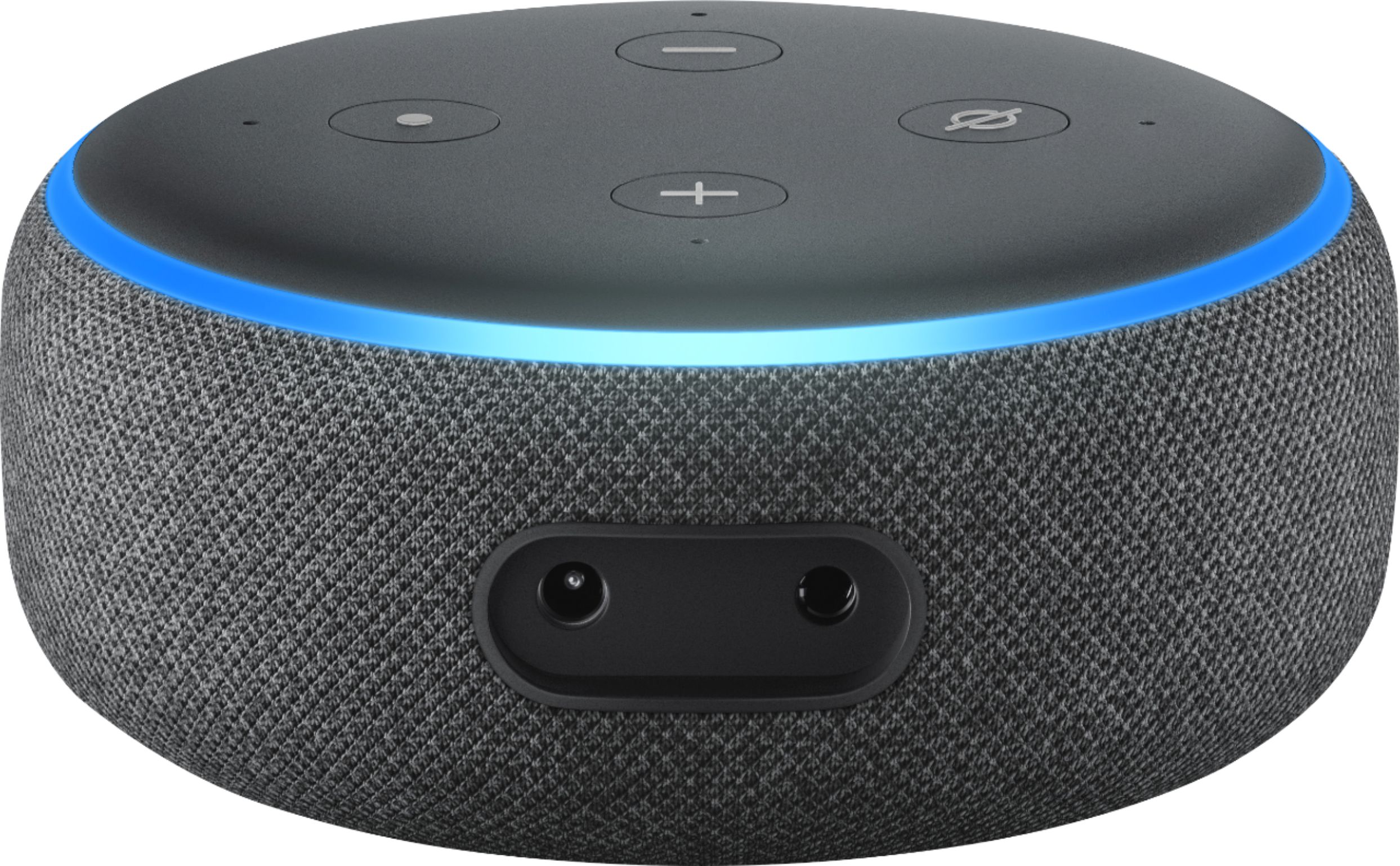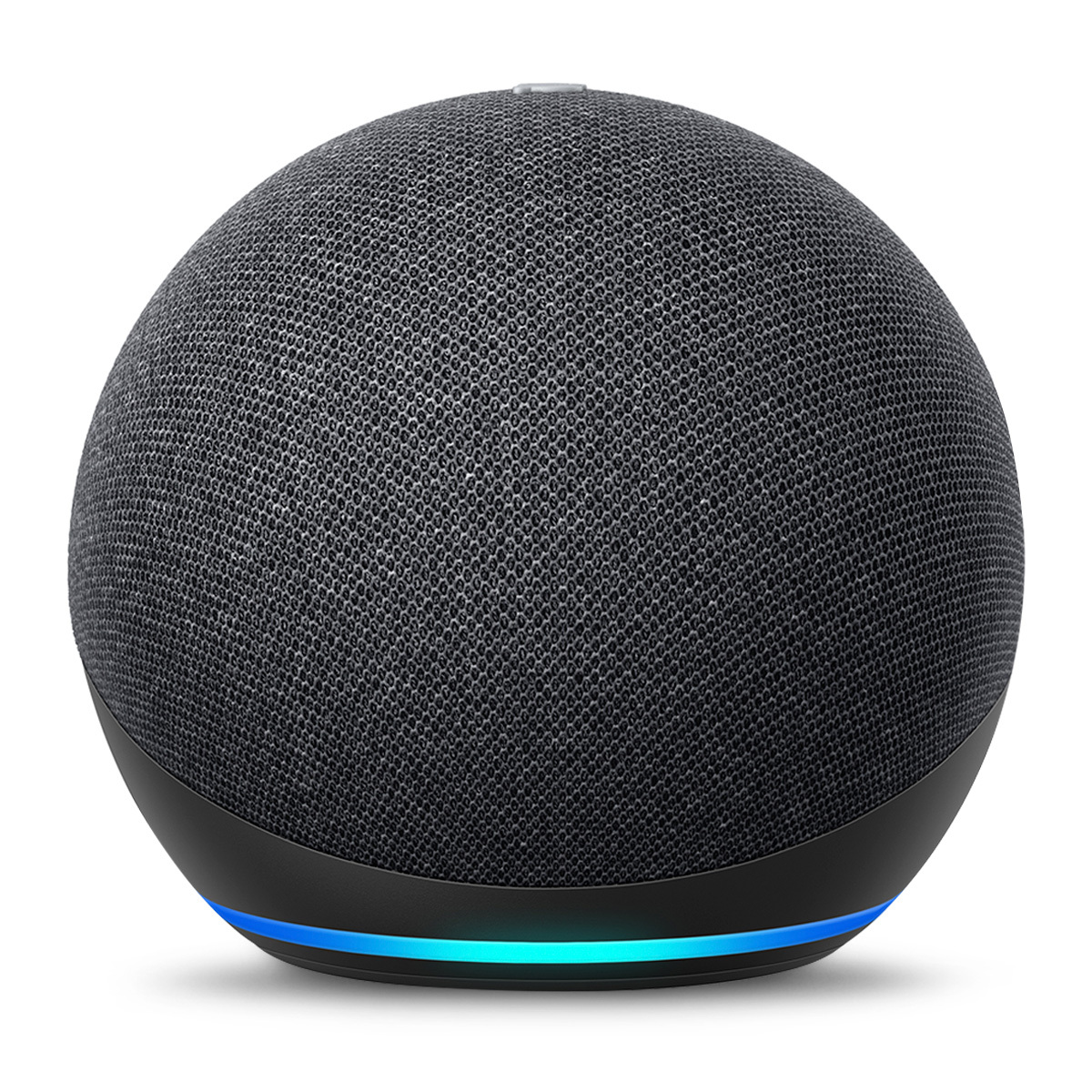Unpacking The 'Alexa Weinbaum Attack': Amazon's AI Leap
In an era defined by rapid technological advancement, the concept of an "attack" often evokes images of cyber threats or digital vulnerabilities. However, sometimes an "attack" can be a powerful metaphor for innovation, a disruptive force that reshapes our interactions with technology and the world around us. This is precisely the lens through which we can view the profound impact of Amazon's virtual assistant, Alexa, on our daily lives—a phenomenon we might playfully term the 'Alexa Weinbaum Attack' on conventional living. This isn't about a literal assault, but rather the relentless march of progress, where intelligent systems are "attacking" the limitations of traditional interfaces, offering unprecedented convenience and a glimpse into a future where technology seamlessly integrates into our personal spaces.
The evolution of Amazon Alexa represents a significant paradigm shift in human-computer interaction. From its humble beginnings as a voice-activated speaker, Alexa has blossomed into a sophisticated artificial intelligence (AI) service, deeply embedded in Amazon's vast cloud computing infrastructure. It's a testament to how far we've come, transforming simple voice commands into complex, intuitive conversations, and continuously adapting to our unique needs. This article delves into the core mechanics, widespread adoption, and groundbreaking new features of Alexa, exploring how this digital companion is not just assisting us, but actively redefining our technological landscape.
Table of Contents
- The Genesis of a Digital Revolution: What is Amazon Alexa?
- The Ubiquity of Alexa: A Global Phenomenon
- Seamless Interaction: The Core of Alexa's Design
- Personalization at Your Fingertips: Tailoring Your Alexa Experience
- The Generative AI 'Attack': Alexa+'s Transformative Power
- Engaging with Alexa: Beyond Voice Commands
- Learning and Discovery: The Official Alexa Channels
- The Future Landscape: What's Next for Alexa?
The Genesis of a Digital Revolution: What is Amazon Alexa?
At its heart, Amazon Alexa is far more than just a voice that answers your questions; it is a virtual assistant technology meticulously marketed by Amazon and ingeniously implemented across a myriad of software applications. From the palm of your hand on smartphones and tablets to the dedicated wireless smart speakers that now adorn millions of homes, Alexa’s presence is pervasive. It represents a fundamental shift in how we interact with technology, moving from tactile interfaces to intuitive voice commands, making digital assistance feel more natural and accessible than ever before. This widespread integration is a clear indication of how Amazon has successfully engineered a system that feels both advanced and effortlessly user-friendly.Alexa's AI Foundation: Cloud Computing Prowess
The true power behind Alexa lies in its robust foundation: it is an artificial intelligence (AI) service powered by Amazon's vast cloud computing infrastructure. This isn't merely a software program running on a single device; rather, every interaction, every query, and every command is processed and understood by an immense network of servers in the cloud. This architecture allows Alexa to constantly learn, adapt, and expand its capabilities without being constrained by the processing power of individual devices. It means that when you ask Alexa a question, the answer isn't just coming from your speaker, but from a global brain of data and algorithms, continuously being refined and updated. This cloud-based approach is crucial for its scalability and its ability to handle complex tasks, making the seamless experience we've come to expect possible. Understanding how Alexa works, where it originates from, and how it can profoundly help you begins with appreciating this powerful, distributed AI foundation. It's this deep technological backbone that allows Alexa to transcend simple commands and evolve into a truly intelligent companion, capable of understanding context and delivering relevant responses, thereby 'attacking' the limitations of static, rule-based systems.The Ubiquity of Alexa: A Global Phenomenon
The journey of Alexa from a novel concept to a household staple has been remarkably swift and impactful. Today, the sheer scale of its adoption is staggering: there are over 600 million Alexa devices out there today. This isn't just a number; it represents a global network of users who have integrated this AI into the very fabric of their daily routines. From bustling urban apartments to quiet suburban homes, Alexa devices have found their place, transforming the way people interact with their environment and their entertainment. This widespread presence underscores a significant 'Alexa Weinbaum Attack' on traditional ways of living, where manual controls and passive entertainment are increasingly being replaced by voice-activated convenience and interactive experiences. Customers already use these devices for an incredible array of purposes, showcasing Alexa's versatility and utility. Playing music remains one of its most popular functions, with users effortlessly summoning their favorite tunes or discovering new artists with a simple voice command. Beyond entertainment, Alexa has also become a central hub for watching videos, especially on devices equipped with screens like the Echo Show, turning kitchens and bedrooms into mini-cinemas. Perhaps most significantly, Alexa has revolutionized the management of smart homes. From adjusting thermostats and dimming lights to locking doors and checking security cameras, Alexa serves as the intuitive voice interface for an ever-growing ecosystem of connected devices. This integration simplifies complex smart home setups, making advanced home automation accessible to everyone and truly 'attacking' the complexity often associated with such technologies. The continuous growth in device numbers and the expanding range of uses highlight Alexa's enduring appeal and its deepening integration into modern lifestyles, proving it's not just a gadget but a fundamental utility.Seamless Interaction: The Core of Alexa's Design
One of the most compelling features of the new Alexa experience is its remarkable ability to facilitate seamless, continuous conversations across multiple devices. This represents a significant leap forward in user convenience, effectively launching an 'Alexa Weinbaum Attack' on the fragmented digital experiences we've grown accustomed to. Imagine starting a conversation or a task on one Alexa-enabled device, perhaps in your living room, and then effortlessly picking up right where you left off on another, say, in your kitchen or even on your phone while you're out. This fluid transition is not just a novelty; it's a fundamental design principle aimed at making Alexa an even more intuitive and integrated part of your life, ensuring that your digital assistant is always in sync with your movements and needs.Cross-Device Continuity: A New Era of Engagement
The question of "How exactly does it work?" is central to appreciating this advanced functionality. This cross-device continuity is powered by sophisticated cloud processing and intelligent state management. When you interact with Alexa, your conversation context and ongoing tasks are not solely processed by the individual device you're speaking to. Instead, this information is securely managed within Amazon's cloud infrastructure. This allows Alexa to maintain a continuous understanding of your requests, even as you switch physical locations or devices. Whether you're asking for a recipe in the kitchen and then want to continue listening to the instructions in the dining room, or pausing a podcast on your smart speaker to resume it on your smartphone, Alexa remembers your progress. This level of integration ensures that your experience is consistently smooth and personalized, eliminating the need to repeat commands or restart tasks. It's a testament to the underlying engineering that prioritizes user experience, making Alexa feel less like a collection of separate gadgets and more like a unified, ever-present assistant, truly 'attacking' the friction points of multi-device environments. Here's everything you need to know about how Alexa works, where it comes from, and how it can help you achieve this unparalleled level of digital continuity.Personalization at Your Fingertips: Tailoring Your Alexa Experience
The true magic of Alexa isn't just in its ability to understand commands, but in its capacity to evolve and adapt to your unique preferences and habits. Amazon explicitly states, "Let us help you personalize your Alexa experience and get more out of your." This isn't just a marketing slogan; it's a core promise that underpins the entire Alexa ecosystem. The more you use Alexa, the more she adapts to your specific needs, learning your voice, your routines, your preferred music genres, and even your conversational style. This continuous learning process is what makes Alexa feel less like a generic AI and more like a truly personal assistant, anticipating your needs and offering relevant suggestions. This adaptive personalization is a subtle yet powerful 'Alexa Weinbaum Attack' on the one-size-fits-all approach to technology, ushering in an era where devices truly understand and cater to individual users. This personalization extends beyond mere convenience. It's about enhancing the utility and enjoyment you derive from your Alexa devices. If you frequently ask for news updates, Alexa will learn your preferred sources and deliver them promptly. If you use Alexa to manage your smart home, she'll begin to understand your daily patterns, perhaps suggesting routines for lighting or temperature control based on your historical usage. This deep level of adaptation ensures that every interaction becomes more efficient and more satisfying. It transforms a functional tool into an indispensable part of your daily rhythm, allowing you to "get more out of your" device by making it truly yours. This commitment to personalization is what fosters a strong, long-term relationship between users and their Alexa devices, making the technology feel less like a distant entity and more like an integral, understanding part of the household.The Generative AI 'Attack': Alexa+'s Transformative Power
The landscape of artificial intelligence is constantly shifting, and Amazon is at the forefront of this evolution with its latest innovation: Amazon’s new Alexa+. This new iteration promises a host of new features powered by generative AI, marking a significant 'Alexa Weinbaum Attack' on the boundaries of what virtual assistants can achieve. Generative AI, unlike traditional AI that primarily processes and responds based on pre-existing data, has the capacity to create new content, understand complex nuances, and engage in more natural, free-flowing conversations. This leap represents a monumental shift from simple command-and-response interactions to genuinely dynamic and creative exchanges.Beyond Commands: The Promise of Conversational AI
Early access to Alexa+ has already yielded impressive results, as noted by one writer: "Our writer got early access and after a couple weeks is impressed — but also wary." The impression stems from the newfound capabilities—the ability to understand context better, to generate creative responses, and to engage in more human-like dialogue. This moves Alexa beyond being a mere tool for specific tasks and transforms her into a more versatile conversational partner, capable of assisting with more abstract requests or even brainstorming ideas. However, the 'wary' sentiment is equally important. The power of generative AI also brings new considerations, such as the potential for unexpected responses, the need for robust ethical guidelines, and the ongoing challenge of ensuring accuracy and reliability in spontaneously generated content. This wariness isn't a detractor but a natural response to groundbreaking technology that pushes the envelope, forcing us to reconsider the implications of increasingly intelligent machines. This dual reaction—awe and caution—is characteristic of any truly transformative 'attack' on the status quo, highlighting both the immense potential and the responsible development required for such advanced AI.Engaging with Alexa: Beyond Voice Commands
While voice remains the primary mode of interaction with Alexa, Amazon has ensured that the experience is not confined to auditory commands alone. Recognizing the diverse ways users engage with technology, Alexa's ecosystem extends to visual and tactile interactions, providing a comprehensive and accessible experience. This multi-modal approach is another subtle 'Alexa Weinbaum Attack' on the limitations of single-interface systems, offering flexibility and convenience for every user preference.The Alexa App: Your Control Hub
A crucial component of this extended engagement is the Alexa app, serving as your personal control hub. The process is straightforward: "Scan QR code with your phone’s camera to open the Alexa app." This simple step connects your physical device to its digital counterpart, unlocking a world of additional functionalities. Before diving in, it’s essential to "install app make sure you have the Alexa app installed on your phone." Once installed, the app becomes indispensable for managing your devices, customizing settings, and exploring new features. Through the app, you can view your shopping lists, manage alarms, review your voice history, and even drop in on other Alexa devices in your home. It provides a visual interface for tasks that might be cumbersome by voice alone, such as setting up complex routines or browsing through skills. This seamless integration between voice commands and app control ensures that users have complete mastery over their Alexa experience, whether they prefer speaking to their device or tapping on their screen, making the 'Alexa Weinbaum Attack' on traditional interfaces even more comprehensive.Learning and Discovery: The Official Alexa Channels
For a technology as dynamic and evolving as Alexa, continuous learning and discovery are key to maximizing its potential. Amazon understands this, providing dedicated platforms for users to deepen their understanding and engagement with the virtual assistant. This commitment to user education and community building is yet another facet of the 'Alexa Weinbaum Attack' on technological barriers, empowering users to truly master their devices. The official YouTube channel for Amazon Alexa serves as a prime example of this initiative. It's a vibrant hub where users can "Come for the tips and tricks, stay for the fun." This channel offers a wealth of practical advice, guiding users through everything from basic setup to advanced features. Whether you're looking to troubleshoot an issue, discover new commands, or simply get more creative with your smart home, the channel provides clear, concise tutorials. Beyond the practical, it also fosters a sense of community and enjoyment, showcasing the lighter side of Alexa interactions and celebrating the innovative ways people integrate the AI into their lives. You can "Meet the devices, learn how to make your home smarter, and wat" (watch) compelling demonstrations of Alexa's capabilities. This resource is invaluable for both new and seasoned users, ensuring that everyone can personalize their Alexa experience and get more out of their investment, reinforcing the idea that the 'Alexa Weinbaum Attack' is ultimately about enriching user interaction and capability.The Future Landscape: What's Next for Alexa?
As we look ahead, the trajectory of Alexa is clearly defined by relentless innovation and an ever-deepening integration of artificial intelligence. The current capabilities, from seamless cross-device conversations and extensive smart home management to highly personalized interactions and the groundbreaking introduction of generative AI in Alexa+, paint a picture of a virtual assistant that is constantly pushing the boundaries of what's possible. The 'Alexa Weinbaum Attack' on conventional technology is far from over; in fact, it's just gaining momentum. The future of Alexa will undoubtedly be shaped by further advancements in AI, particularly in areas like natural language understanding and proactive assistance. We can anticipate even more intuitive interactions, where Alexa not only responds to commands but anticipates needs, offers timely suggestions, and manages complex tasks with minimal prompting. The integration of more sophisticated generative AI will lead to even richer, more human-like conversations, transforming Alexa into a more capable and versatile companion. Furthermore, as the ecosystem of smart devices continues to expand, Alexa's role as the central orchestrator of the connected home will become even more critical, simplifying our lives in ways we are only just beginning to imagine. The continuous pursuit of personalization, seamless connectivity, and intelligent adaptation ensures that Alexa will remain at the forefront of the smart technology revolution, continually 'attacking' the limitations of the present to forge a more convenient and connected future.Conclusion
The journey of Amazon Alexa, from its inception as a novel voice assistant to its current status as a pervasive AI service, exemplifies a profound technological transformation. What we've termed the 'Alexa Weinbaum Attack' is not a literal threat, but a powerful metaphor for the disruptive innovation Alexa brings—challenging traditional interfaces, enhancing personal convenience, and redefining our interaction with smart technology. We've explored its vast cloud-powered foundation, its presence in over 600 million devices globally, and its seamless cross-device capabilities that allow conversations to flow effortlessly from one device to another. The core of Alexa's appeal lies in its unparalleled personalization, where the more you engage, the more she adapts to your unique needs, making every interaction more efficient and tailored. The advent of Alexa+, powered by generative AI, marks a new frontier, promising more natural, creative, and intelligent
Amazon's Alexa app hits the top of the App Store for the first time

Amazon Echo Dot (3rd Gen) Smart Speaker with Alexa Charcoal B07FZ8S74R

Amazon Echo Dot Alexa 5ta Generación Negro | RadioShack México